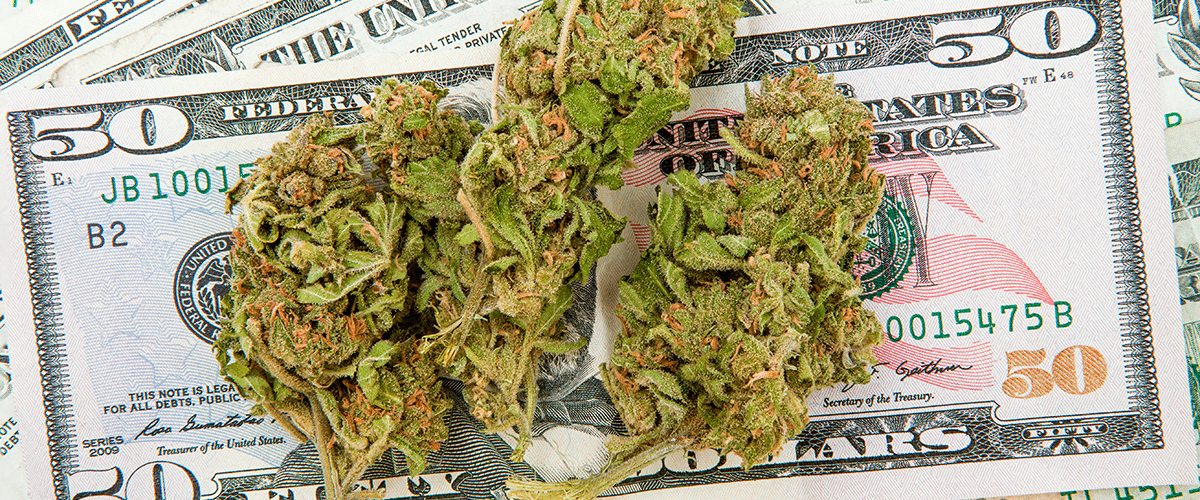[vc_row][vc_column][vc_column_text]
California would collect an estimated $1 billion in tax revenue by 2020 if voters legalize recreational marijuana this coming election. Take a look at how that money will be used.
If polls are an accurate indication, California voters are expected to pass a measure this November that would legalize adult use marijuana throughout the state. California Proposition 64, or the Adult Use of Marijuana Act, would allow adults aged 21 years or older to possess and use marijuana for recreational purposes.
Proposition 64 would impose a 15 percent sales tax on consumers, and growers would be subject to a cultivation tax of $9.25 per ounce for flower and $2.75 per ounce for leaves. Legalization is expected to balloon California’s already-dominating legal marijuana market value to an estimated $6.46 billion by the year 2020, allowing the state to pull in more than $1 billion in tax revenue annually.
Most of the revenue collected from recreational marijuana sales would be deposited in a new California Marijuana Tax Fund. Here’s exactly how that tax revenue would be allocated, as directed by Proposition 64:
1. Cover Costs for Regulating Measure
The tax revenue collected by the state will first go to covering the costs of administering and enforcing the measure. The monies will go directly to agencies overseeing the regulation of the industry, some of which include the Department of Consumer Affairs, Department of Food and Agriculture, Department of Fish and Wildlife, the State Auditor, Division of Labor Standards Enforcement and Occupational Safety and Health, and the Legislative Analyst’s Office. Under the law, the regulatory costs cannot exceed 4 percent of the tax revenue received.
2. Further Research into the Medicinal Properties of Cannabis
The Controller will disburse a total of $2 million per year to the UC San Diego Center for Medical Cannabis Research to study the medicinal effects of marijuana. So far, research has shown cannabis to be therapeutically beneficial for treating several conditions, including pain, nausea, epilepsy, multiple sclerosis, some cancers, Alzheimer’s disease, Parkinson’s disease, and spinal cord and traumatic brain injuries. Learn more about the research already done on medical marijuana by visiting our education page.
3. Oversee and Monitor Measure’s Implementation and Impact
Beginning in 2018, a total of $10 million per year for 11 years will go to public California universities to research and evaluate the implementation and impact of Proposition 64. The universities will examine the measure’s impact on public health and public safety, and monitor its statewide economic impact and marijuana market prices. Researchers receiving the funds will publish reports on their findings and make policy-change recommendations to the California Legislature and California Governor. The Bureau will select the participating universities.
4. Establish Driving While Intoxicated Protocols
Starting in 2018, $3 million will be allocated annually for five years to the Department of the California Highway Patrol to develop protocols to determine whether a driver is operating a vehicle while impaired due to marijuana consumption. The CHP will be allowed to use the money to hire private research funds to develop technology to determine whether a driver is impaired.
Technology developments for detecting tetrahydrocannabinol (THC), the psychoactive component found in marijuana, are already underway. A team of Stanford University engineers recently developed a portable device that can detect THC in a driver’s saliva, and an Oakland-based company has created a breathalyzer unit that can detect THC.
5. Support Social and Medical Health
A total of $10 million, increasing each year by $10 million until settling at $50 million in 2022, will be allocated for grants to local health departments and community-based nonprofits supporting “job placement, mental health treatment, substance use disorder treatment, system navigation services, legal services to address barriers to reentry, and linkages to medical care for communities disproportionately affected by past federal and state drug policies.’[/vc_column_text][/vc_column][/vc_row][vc_row][vc_column][vc_single_image image=”17394″ img_size=”1200×250″ onclick=”custom_link” link=”https://www.medicalmarijuanainc.com/legal-marijuana-sales-forecasts-potentially-44-billion-2020/”][/vc_column][/vc_row][vc_row][vc_column][vc_column_text]The remaining tax revenue, as directed by Proposition 64, would be sent to the General Tax Fund and distributed as follows:
- Of the remaining revenue, 60 percent would go to the Youth Education, Prevention, Early Intervention, and Treatment Account. In collaboration with the Department of Health and Department of Education, schools would educate youth on substance abuse and treatment and encourage prevention.
- A total of 20 percent of the remaining revenue would be allocated to prevent and alleviate environmental damage from illegal marijuana producers. The funds would be deposited in the Environmental Restoration and Protection Account.
- To reduce driving under the influence of marijuana, 20 percent of the remaining funds would be sent to the State and Local Government Law Enforcement Account for programs designed to educate drivers of dangers.
In addition to revenue brought to California through taxes, Proposition 64 is expected to save the state $100 million annually due to reduced legal and incarceration costs related to enforcing prohibition. The measure is endorsed by Lieutenant Governor Gavin Newsom, the California Medical Association, and notable state publications like the Los Angeles Times.
You can read the full 62-page text of the California Proposition 64 initiative here. Learn more about the current cannabis laws in California by visiting our education page. [/vc_column_text][/vc_column][/vc_row]






